Hyundai Nexo review: Is Hydrogen the future for electric cars?
Some of the world’s leading brands are racing to produce battery-powered electric vehicles, but others are taking a punt on different tech.
It’s the sixth SUV from Hyundai, but don’t go looking for the Nexo in dealerships.
Powered purely by hydrogen, the fuel-cell electric vehicle (FCEV) is not for general sale.
Hyundai is instead leasing cars to companies and governments keen to trial the zero-emissions technology.
Not that the Nexo would be a big seller. If there was a price tag for the first FCEV certified for sale in Australia, it would likely hover around $100,000.
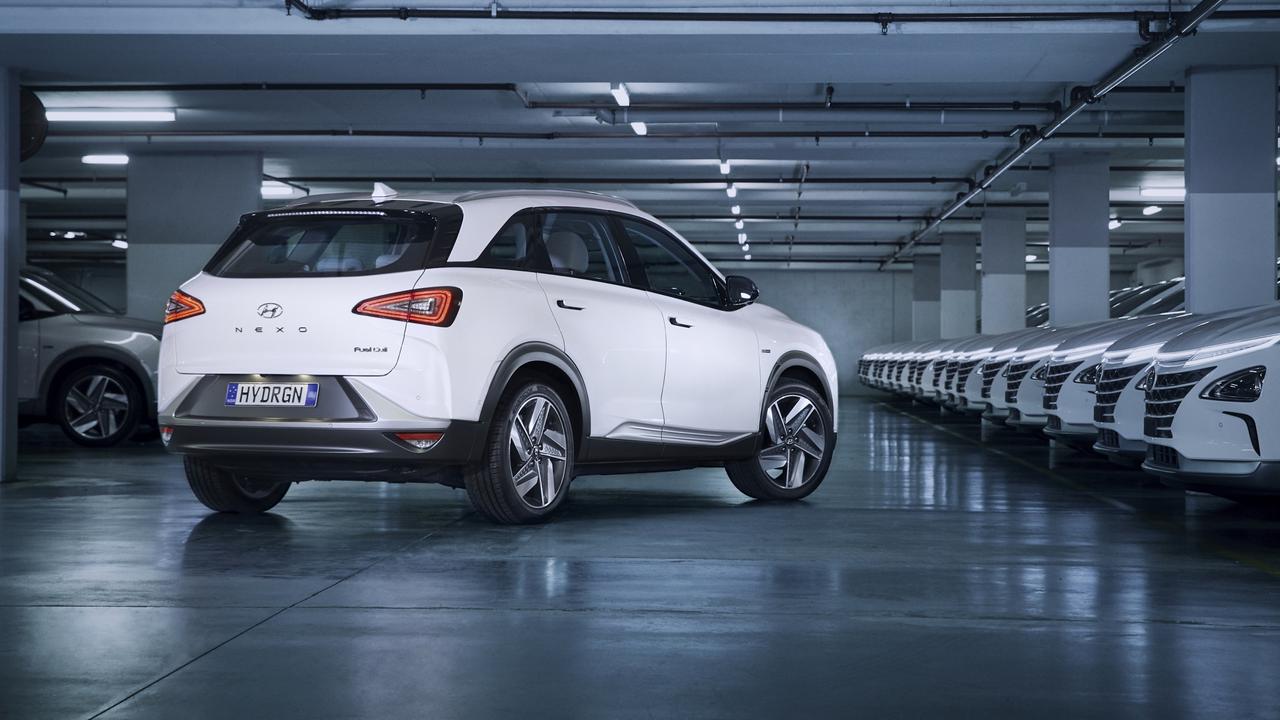
The curvaceous five-seater is similar in size and stature to a mid-sized SUV such as Hyundai’s Tucson.
It’s brimming with features and tech, including a digital instrument cluster, panoramic sunroof, 360-degree camera and auto emergency braking.
But it’s all very normal inside, albeit with a floating centre console with storage beneath.
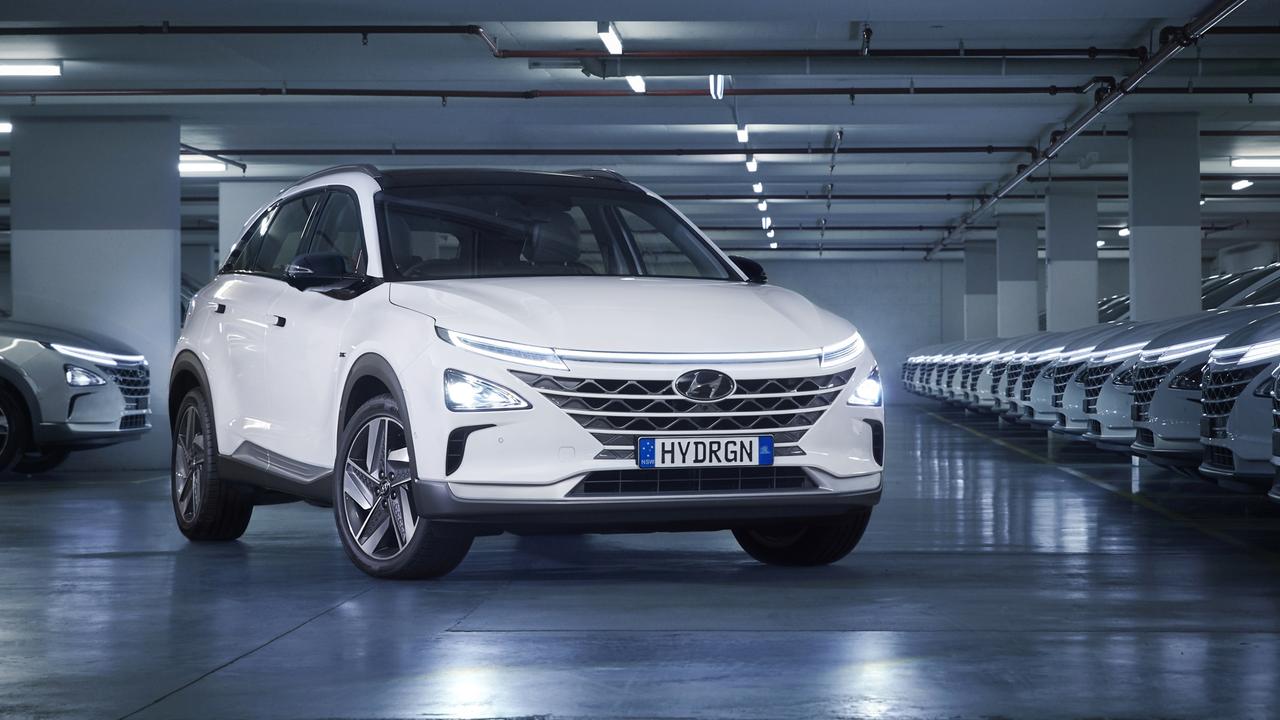
The FCEV’s key advantage over battery electric vehicles is that the refuelling experience is similar to a petrol car. It has a claimed range of 666km and there’s no plugging in and waiting for hours for it to recharge.
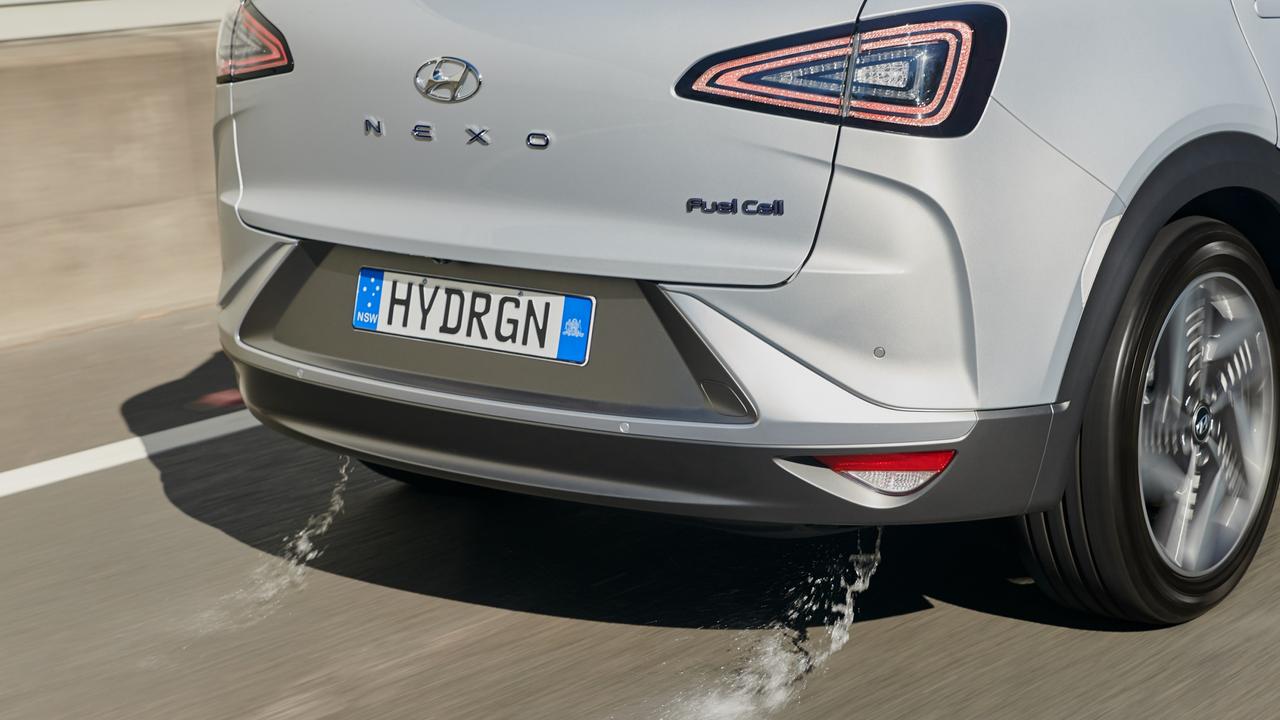
Instead, the Nexo is refuelled with hydrogen at something that looks a lot like a petrol station in a matter of minutes.
There are no banks of batteries but three carbon fibre tanks under the rear seats, between them taking 6.33kg of the most abundant element on Earth. The positioning of those tanks means people in the back will set fractionally higher than usual. Taller folks’ heads are likely to graze the roof.
For now, there are only two places to refuel the Nexo: the ActewAGL site in an industrial area of Canberra or at Toyota’s Hydrogen Centre in Melbourne’s west.

Under the Nexo’s bonnet is a fuel cell stack that looks a lot like an engine but performs a very different task. Fuel cells work by combining hydrogen and oxygen to create electricity. There are exhaust pipes, but the only thing that comes out of them is water you can drink.
The Nexo also has a battery pack — the same one used in the Hyundai Ioniq Hybrid — to ensure access to instant electricity and allow for mild regenerative braking, which is like gently squeezing the brake pedal.
The single electric motor driving the front wheels is also familiar. It’s the same one used in the Kona Electric, a smaller battery electric SUV.
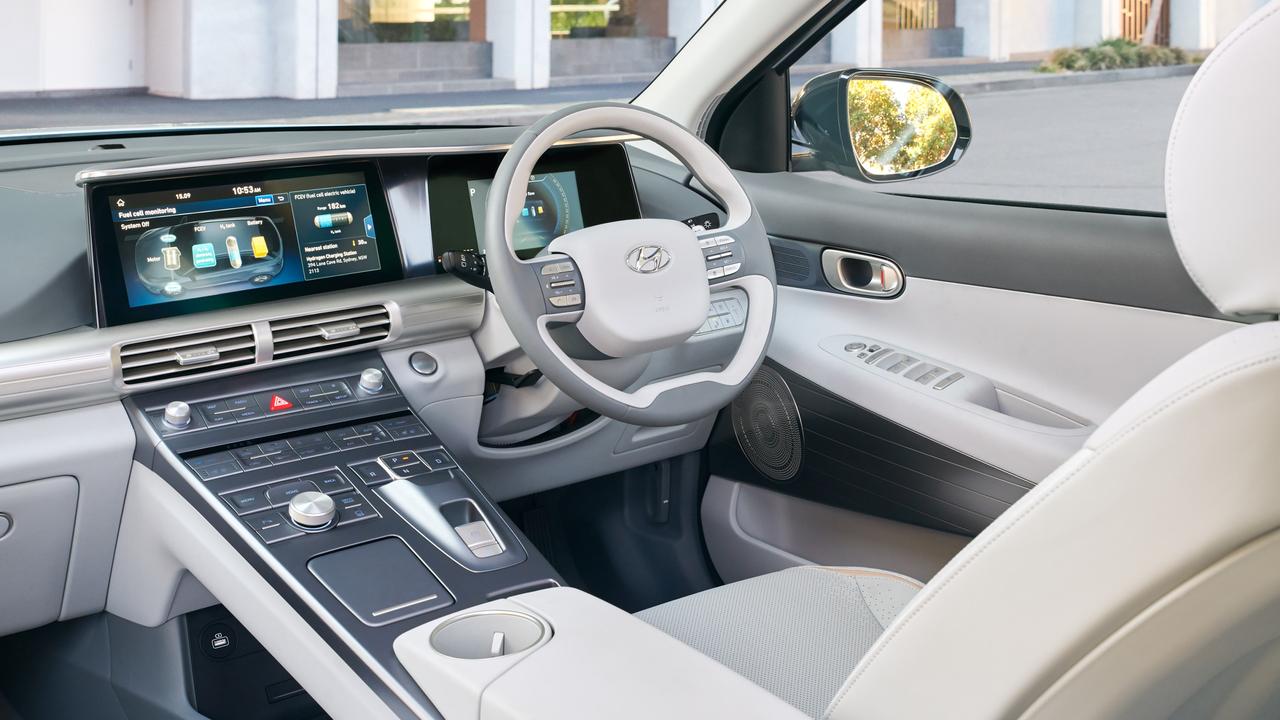
No surprises, then, that the Nexo drives almost identically to an EV.
There’s a healthy 395Nm of pulling power that kicks in almost instantly when you press the throttle. It makes zipping around in traffic a snip, the crisp response to any poke of the throttle welcomed.
Other than a futuristic whirring at low speeds and a building roar from the tyres there’s almost no noise in the cabin.
With upwards of 1.8 tonnes to shift — clearly the hardware for the hydrogen system isn’t light — acceleration is subdued rather than swift. The dash to 100km/h takes 9.2 seconds and accelerating from 100 to 110km/h is not as slick as the pull at lower speeds.
The main difference between a Nexo and other EVs is where that weight is positioned. In an EV the heavy battery pack resides in the floor, but in the Nexo some of those heavier things are higher, which creates more lean when cornering.
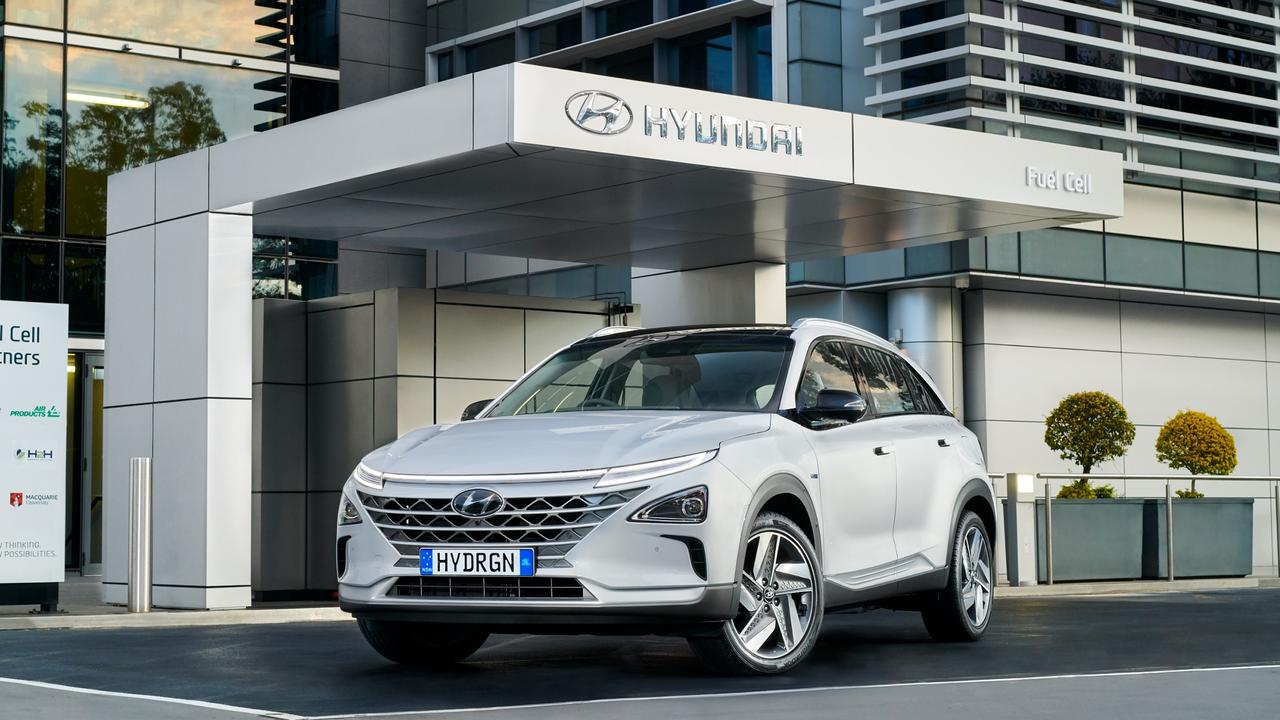
It’s clearly been set up for comfort, as the suspension is more relaxed than sporty in the way it controls the car.
Hydrogen motoring in Australia is for now impractical for all but a select few who want to confine their driving to within a few hundred kilometres of two refuelling stations.
But Hyundai and rival Toyota see big potential in future. Heavy vehicles such as trucks and buses are a prime target because of the fast refuelling times.
There’s also potential for vehicles that tow, including utes and large SUVs, although there’s a lot that has to happen before the cars become a viable option for the average Aussie.
For now it’s a glimpse into part of a zero emissions future.
VERDICT 3.5/5
An expensive peek into the tech that could one day power larger vehicles.
HYUNDAI NEXO VITALS
Price: Estimated at about $100,000
Warranty/servicing: 5 yrs/unlimited km, service pricing packaged into lease
Safety: Autonomous emergency braking, lane-keep assist, 360-degree camera, blind-spot warning, rear cross-traffic alert
Motor: 120kW/395Nm
Thirst: 1.0kg/100km (hydrogen)
Spare: Tyre repair kit
Boot: 461L



